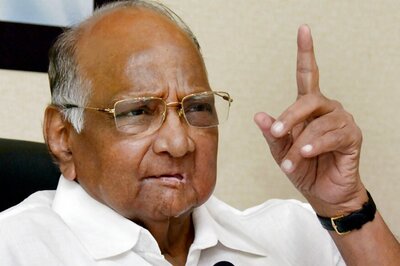
views
The Great Indian General Election of 2019 is underway and a look at the political agendas of the day reveals how the times have changed since 2014. While corruption, development and dynasty were three key issues in the 2014 election, the 2019 election has nationalism, unemployment, and religious fault-lines at the forefront.
In the midst of all these, the issues of pollution, environmental degradation, which are as real as air voters breathe and water they drink is nowhere in sight. It is easy to think of these issues as an elitist discourse, secondary to livelihood and development, but the line is more blurred than one would think.
India tops the list of countries with the most environmental and ecological conflicts, as per the Environmental Justice Atlas. Since 2012, more than 301 environment-related conflicts took place in India, leaving second-place Brazil (129) and Colombia (128) far behind.
The issues in these conflicts ranged from industrial pollution, deforestation, mining pollution and many other ecological side-effects of industrial projects. Some of these conflicts also turned deadly. In May of 2018, 13 people lost their lives during a protest against pollution from Sterilite Copper Factory in Tamil Nadu.
The electorate is aware of the debilitating effects on environmental degradation. Yet, the political discourse has treated the issues as of marginal or no importance.
The 1984 Bhopal gas tragedy was the most significant and deadliest industrial environmental disaster in the country. The residual effects still persist among the following generations and in the biosphere affected by the disaster. Madhya Pradesh state assembly elections followed in 1985 and despite the messy post-disaster management, the electorate voted the same Congress government to power once again.
However, the 1980s was an era in Indian democracy where the opposition was weak, and viable political alternatives were in a nascent stage. Thirty-five years hence, we are a mature democracy with a robust opposition, a vigilant media and even stronger social media. Such an event in the present context may not escape without stronger political ramifications.
Even regional environmental issues turn into national news now more than ever before.
The anti-Sterlite massacre became a potent political issue that dominated the prime-time conversation, making the protest into a national issue.
The cataclysmic pollution problem in Delhi was addressed (momentarily) using Odd-Even rules. Scientifically and statistically, it had minimal impact on the overall pollution levels. But it snowballed into a national political issue, where all the major national political parties were involved in a prime-time conversation on the economics and environmental impact of Odd-Even rule.
Some local Delhiites encouraged such action, and some hated it. The fault-lines were quickly turned into front-lines between political rivals.
Would this trend lead to the emergence of a Green party in India, like in the Western countries?
Clearly, the electorate demands environmental action but development and national security rhetoric make it much easier for the political parties to mobilize people. There would still be gains from a political party dedicated to environmental issues. They can act as a platform to raise the issues, provide voters with more choice and raise awareness.
Given the economics of elections, a seat in the legislative assembly or parliament would be highly unlikely, but their vote share may make major political parties to feature environment more prominently.
The final objective, of course, remains more action on the ground. A study in Economic and Political Weekly recently studied election manifestos of eight political parties in 2014 and concluded that very little was done to meet environmental promises.
While manifestos cannot be taken to mean much post-election, this highlights the dissonance between demands of the electorate and policy-making of the government.
In 2019, BJP and Congress both promise to strengthen the National Clean Air Programme and reduce urban pollution. Congress has gone further out with the green promise to land and water use reforms.
It would be impossible to assess how green promises helped the vote shares, but it can be said that the environment is not a non-issue anymore.
As the side-effects of development become stronger and increase environmental degradation, pollution and health disorders, voters demand for action will increase. Issues such as national security, caste and religion will still continue to dominate the mainstream discourse as they ever had. But among the issues that are real to voters and of immediate concern, the environment is only going to become bigger.
(With co-writer Anirudh Agrawal)
Ashish Tyagi is a postdoctoral researcher at Frankfurt School of Finance & Management.
Anirudh Agrawal is part of International research and Analytics team at Frankfurt School of Finance & Management




















Comments
0 comment